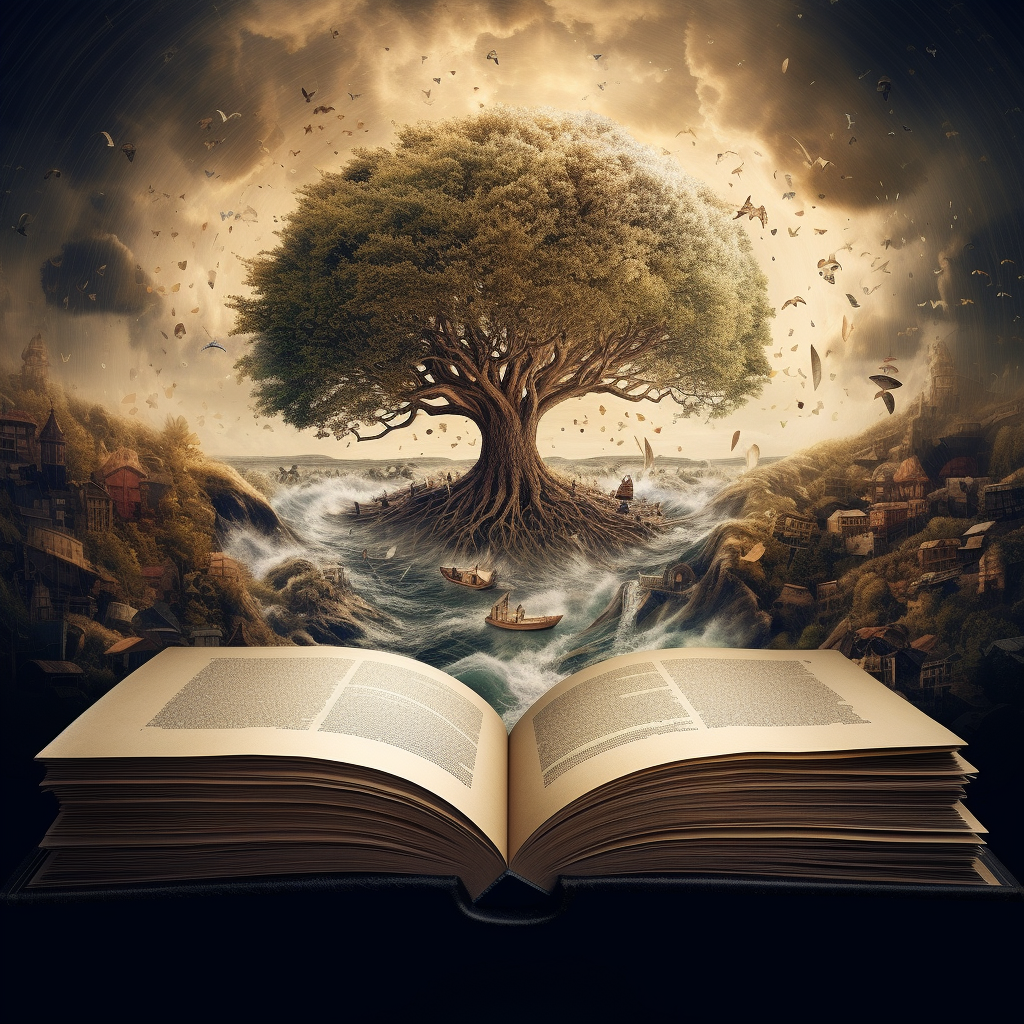
Is your creative mindset inquiring about what is the middle of a poem called? Poetry, the art of capturing the essence of life and emotion through words, is a realm of endless wonder. In this world of verses and metaphors, every element has its purpose and place. The middle of a poem, often overlooked but vital, is where the magic truly happens. Join us on a poetic journey as we unveil the secrets of the middle, exploring its role, significance, and how it breathes life into the verses we hold dear.
In the symphony of words that is poetry, the middle stanza, often referred to as the central verse, carries its unique melody. It’s where the poet’s narrative takes a twist, where emotions intensify, and where the heart of the poem beats strongest. As we delve into the middle of a poem, you’ll discover that it’s not just a structural component; it’s the very soul of poetic expression. So, let’s wander through the poetic landscape and find the heart of the matter in the middle of a poem.
Unveiling the Poetic Landscape: The Significance of a Poem’s Middle

When you venture into the enchanting world of poetry, you’ll quickly realize that it’s a realm where words don’t merely exist; they transform into art. Every word becomes a brushstroke, and every verse a canvas where emotions take flight. Yet, within this vibrant landscape of poetry, one segment holds a special place – the middle of a poem.
Imagine a poem as an intricate journey, a path leading you through the poet’s thoughts, feelings, and experiences. It has a beginning, a middle, and an end. While the beginning introduces you to its world, and the end offers a conclusion, the middle serves as the beating heart of this odyssey.
In this poetic expedition, we’ll delve into the heart of a poem – its middle. We’ll uncover what the middle of a poem represents, why it’s essential, and how it plays a pivotal role in shaping the poetry we come to cherish. Join us on this journey through the intricate landscapes of poetry’s core.
What is the Middle of a Poem Called? Where the Magic Happens

In the world of poetry, the middle of a poem is akin to the central stage in a grand performance. It’s the pivotal moment, the beating heart of a poet’s creation, where the magic happens. This section, often referred to as the central stanza or middle verse, serves as a fulcrum in the poet’s artistic journey. It’s where narratives take unexpected turns, where tension is carefully woven, and where poets plunge into the profound depths of their subject matter.
1. Poem Structure: The Blueprint of Poetry
Poetry, with its diverse forms, from the structured sonnets of old to the free-flowing verses of the modern era, possesses an inherent structure. This structure divides poems into distinct sections, creating a rhythm that guides the reader’s experience. At the heart of this structure lies the middle of the poem.
Regardless of poetic form, the middle is a vital component of this framework. Here, the thematic content unfolds, and metaphors and imagery gain depth, allowing the poet’s message to blossom fully.
2. Narrative Shift: The Twist in the Tale
In many poems, especially those with a narrative structure, the middle acts as a narrative fulcrum. It’s where stories take unexpected turns, where characters face crucial decisions, or where the emotional core of the poem is unveiled.
Imagine reading a story where the protagonist stands at a crossroads, faced with a life-altering decision. The middle of a poem often mirrors this pivotal moment, offering a twist that keeps readers engaged and invested in the poet’s tale.
3. Emotional Intensity: The Heart of the Matter
At its core, poetry is an emotional vessel, a means for poets to convey the depth of their inner worlds. As we journey through a poem, emotions tend to intensify as we reach the middle. It’s here that poets harness the power of words to evoke profound feelings, drawing readers deeper into their artistic universe.
Just as a skilled chef adds layers of flavor to a dish or a painter uses various hues to bring depth to a canvas, poets use the middle of a poem to infuse their work with emotional intensity. It’s where raw emotion is laid bare, where sentiments are amplified, and where the true essence of the poem often resides.
In this exploration of the middle of a poem, we will uncover its significance, its role in various poetic forms, and how it enriches the reader’s experience. Join us on this poetic journey as we navigate the intricate terrain of the middle, where verses come alive and emotions find their voice.
Crafting the Middle: An Artistic Symphony

Having unveiled the significance of the middle of a poem, let’s embark on a journey through the creative process that poets undertake when crafting this essential element of their work.
1. Symbolism and Imagery: Brushstrokes of Imagination
Picture the middle of a poem as a canvas where poets unleash their creative prowess. Here, symbolism and vivid imagery take center stage. Poets employ these tools to orchestrate a sensory experience for readers, using words to paint intricate pictures. It’s in the middle that language often transforms into a tapestry of symbols and metaphors, beckoning readers to immerse themselves deeper into the poet’s realm.
Much like an artist selecting the perfect brushstroke to capture the essence of a scene, poets choose their words meticulously to evoke emotions, provoke thoughts, and ignite the imagination.
2. Metaphors and Similes: The Palette of Comparison
In the middle of a poem, metaphors and similes come to life like the vibrant colors on an artist’s palette. These literary devices are the poet’s means to convey intricate ideas and profound emotions through relatable comparisons. They add layers of depth and richness to the poem’s overall tapestry.
Imagine a poet describing a turbulent sea as “a tempestuous beast roaring like thunder.” This comparison not only conjures a vivid mental image but also imbues the poem with a sense of drama and intensity. Metaphors and similes in the middle are the strokes of genius that elevate poetry from mere words to an art form that resonates with readers on a profound level.
3. Exploring Themes: Navigating the Heart of the Matter
The middle of a poem provides poets with the perfect space to delve deeper into their chosen themes. Whether it’s the exploration of love, the anguish of loss, the beauty of nature, or the enigma of human existence, this is where poets dissect and scrutinize these themes with precision and passion.
Think of it as a poetic laboratory where themes are examined under the microscope of words. The middle offers poets the freedom to explore the facets, nuances, and contradictions inherent in their chosen themes, providing readers with fresh perspectives and profound insights.
4. Maintaining Flow: The Poetic Heartbeat
Just as a conductor keeps time in a musical performance, the middle of a poem plays a critical role in maintaining the poem’s flow and rhythm. Poets are acutely aware of the cadence, the musicality of their words, and this section often serves as the poetic heartbeat.
Much like a skilled musician sustaining a melody, the middle keeps the reader engaged and connected to the work. It ensures that the poem is not a disjointed collection of verses but a harmonious symphony where words resonate in perfect resonance, creating an unforgettable poetic experience.
In this exploration of the middle of a poem, we’ve witnessed how poets weave their artistic tapestry with symbolism, metaphors, and themes. We’ve felt the heartbeat of poetry, its rhythm, and flow, and marveled at the vivid imagery that brings verses to life. Join us as we delve deeper into the essence of the middle, where poetry transcends words and becomes an artistic symphony for the soul.
The Poetic Pulse: Where Verses Dance to Life’s Rhythm

In the symphonic world of poetry, the middle of a poem is akin to the steady pulse of a heartbeat. It’s the rhythmic center where the narrative breathes, emotions find their resonant chords, and the poet’s artistry shines at its brightest. Just as a journey feels incomplete without a middle chapter, a poem lacks depth and substance without this pivotal element.
As we bid adieu to this exploration, I invite you to reflect on the profound role that the middle of a poem plays in the world of literature. It’s not merely a segment of verses; it’s the compass that deftly guides your journey through the labyrinth of poetic words. It’s the heartbeat, synchronized with every line and stanza, orchestrating the symphony of language and emotion. It’s the essence of poetic storytelling, where words cease to be mere text and metamorphose into an enchanting world of imagery, meaning, and artistry.
So, the next time you immerse yourself in the mesmerizing world of poetry and find yourself contemplating what the middle of a poem is called, remember this: it’s the poetic pulse that quickens your spirit, the magnetic core that draws you deeper into the verses, and the nexus where language and emotion coalesce in a harmonious dance. It’s the heart of poetry, beating eternally in the soul of every reader and writer alike.
Learn More About Earning Income from Your Poetry
- Publish Poetry Online and Get Paid
- Do you get paid for publishing poetry?
- How can I get my poetry noticed?
- How much should I sell my poetry for?
- How much does it cost to publish poetry?
- Can anybody be a poet?
- What are the 11 rules in writing a poem?
- What is the number one rule of poetry?
- How many lines must a poem have?
- What is a single line of poetry called?
- What is a poem with one line called?
- What is the middle of a poem called?
- Why don’t poets follow grammar rules?
- What is 3 line poetry called?
- What should a poem look like?
- How to write good poems?
Frequently Asked Questions (FAQs)
1. Is there a specific term for the middle of a poem?
The middle of a poem is often referred to as the “central stanza” or the “middle verse.” These terms highlight its significance in the poem’s structure.
2. Why is the middle of a poem important?
The middle of a poem is essential because it’s where the poem’s narrative often takes a turn, where emotions intensify, and where the poet delves deeper into their subject matter. It plays a pivotal role in shaping the poem and engaging the reader.
3. How can I write an impactful middle for my poem?
To write an impactful middle for your poem, consider the following:
- Symbolism and Imagery: Use vivid symbolism and imagery to create a sensory experience for your readers.
- Metaphors and Similes: Employ metaphors and similes to convey complex ideas or emotions through relatable comparisons.
- Explore Themes: Dive deeper into your chosen themes, offering fresh perspectives and profound insights.
- Maintain Flow: Pay attention to the flow and rhythm of your poem, ensuring that the middle maintains the reader’s engagement.
4. Can the middle of a poem vary in length?
Yes, the length of the middle section in a poem can vary. It depends on the poem’s overall structure, style, and the poet’s artistic choices. Some poems may have longer and more elaborate middle sections, while others may keep it concise.
5. Are there specific rules for crafting the middle of a poem?
There are no rigid rules for crafting the middle of a poem, as poetry is an art form that allows for creative expression. However, poets often focus on maintaining thematic depth, using literary devices effectively, and ensuring a smooth flow in this section.
Remember that the middle of a poem is your canvas, your opportunity to draw readers deeper into your poetic world. Embrace it with creativity and let your words paint a vivid and unforgettable picture.